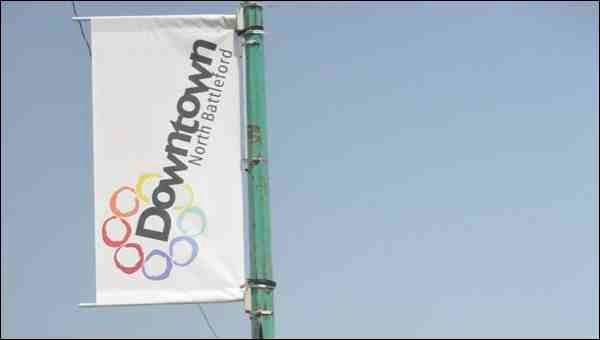The hot issue facing City Hall right now is all about tax incentive policies.
Tax incentives have been a prime topic ever since Aaron Cadrin submitted a request for an incentive for proposed new construction at 1542-100th Street, outside of the downtown incentive area.
That has since prompted debate at City Hall on what incentives should be offered to builds outside the downtown core. Now, after the latest meeting at City Hall on the issue, council is putting their entire tax incentive policy under the microscope.
The city intends to hold a dedicated planning committee meeting in the spring to take a complete look at the incentive policies already in place, both for downtown and other areas of the city.
Mayor Ryan Bater noted the city’s downtown revitalization incentives, as well as the dis-incentive policies cracking down on vacant commercial buildings, are set to expire in 2019 after 24 months.
“It makes sense timing-wise because we’ll be coming to the two-year anniversary of the creation of the vacant commercial property subclass, that was developed at the same time of the downtown incentive policy,” Bater said to reporters.
“Like any policy you want to evaluate its effectiveness and whether it needs to be continued or discontinued or whatever. It’s about having a conversation about tax incentives for commercial entities in the city as a whole.”
The latest chapter in the incentives discussion came Tuesday night, when council considered a notice of motion from Kent Lindgren from the previous meeting. It would have directed administration to develop a business tax incentive policy for the key commercial corridor, one “significantly less” than the downtown revitalization incentive.
But that was defeated by a 3-2 vote, as other councillors favoured Bater’s proposal to have broad discussions on the issue.
One concern was about the challenge posed to administration in coming up with a policy that fit all the requirements.
“The problem is there’s so many different levels of properties and areas involved with this, that how do you define and try to put everything in one incentive that’s going to meet all the needs?” said Councillor Greg Lightfoot. He suggested having one policy that covered everything “would be hard to do.”
In speaking to reporters, Bater also noted that in addition to the downtown incentive, there was also an incentive policy related to export industries currently in place.
“I think that this warrants some time in our planning committee meeting to evaluate their effectiveness and see if changes are required,” Bater said.
Here is a rundown of the two main incentive policy programs currently in place in the city:
DOWNTOWN REVITALIZATION TAX INCENTIVE
Introduced 2017 on a 24-month basis
Requirements: must be commercially assessed property located within the downtown business improvement district (BID) area.
All taxes and charges must be current.
Only one application can be made per property over a 24-month period.
Building codes, the zoning bylaw and various other regulations must be complied with and building inspections must be done.
Eligibility of projects must be determined by city council.
Six incentives are offered under this program:
Building Façade and Site Improvements incentive
Rebates 25 per cent of the combined total cost of eligible façade or site improvements.
Building improvements and expansion incentive
Abates municipal taxes for existing buildings and businesses that improve their property through new construction or interior renovations.
A minimum spend of $100,000 is required to be eligible. A project value more than $500,000 would be eligible for a five-year exemption. It is four years for more than $250,000 (up to $499,999), three years for more than $200,000, two years for more than $150,000 and one year for more than $100,000 up to $149,999.
Vacant Property Tax Incentive
Eligible properties are buildings vacant for a minimum of two years. The incentive would be 100 per cent for the first year and 50 per cent for year two.
Construction incentive for builds greater than $500,000
Incentive runs at 100 per cent for years one-to-three, 75 per cent for year four, and 50 per cent for year five. Demolition costs not eligible under the program.
Residential incentive
Covers new constructions of medium- to high-density residential units (five or more) are covered. The incentive for years one and two are 100 per cent, for year three it is 50 per cent and year four 25 per cent.
Brownfield incentive
Abates municipal taxes for properties that are contaminated. This is 100 per cent through years one through four, and at 75 per cent in year five.
BUSINESS INCENTIVE POLICY
Introduced 2016. Aimed at export industries to promote job creation.
Eligibility: must be a legally incorporated entity involved in one or more of the following industries: renewable energy, manufacturing (processing or value chain added), oil and gas, mineral processing or agriculture.
Eligibility Requirements
Business applying for incentive must meet the following criteria:
Be the legal owner of the property; have in place the required financial resources to complete the project; have viable business plan; creation of new full time employment; business must be licensed to operate in North Battleford; business must be subject to commercial taxation.
Amount of incentive is based on a combination of jobs created, industry, location and permanency of the project. Specific incentive amounts are based on a points scale based on, in order of importance: jobs created, annual pay for 10 or more employees, any new buildings, salvage of an existing building if a new building is going up, and whether a business is new to North Battleford.




